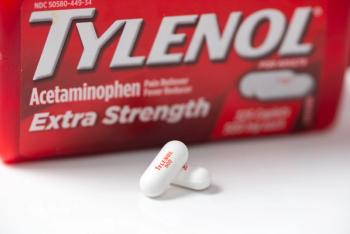
Skeletal Muscle Relaxants May Offer Benefit for Some Types of Chronic Pain
Research is limited on the effectiveness and efficacy of this class of medications.
For patients experiencing some kinds of chronic musculoskeletal pain, long-term use of skeletal muscle relaxants may benefit patients, according to results of a study published in JAMA Network Open.1
Clinical guidelines for managing chronic pain have shifted to prioritizing a multimodal approach to pain management, incorporating nonpharmacologic and nonopioid pharmacologic treatment options. Skeletal muscle relaxants are one of these treatment options: they are a “pharmacologically diverse” medication class, including a range of antispasticity and antispasmodic therapies. While effective, they must be used with caution due to adverse central nervous system effects.
Due to the growth in use of these medications, as well as a lack in evidence regarding long-term efficacy, investigators conducted a systematic review to evaluate the effectiveness or efficacy of long-term use of muscle relaxants for chronic pain.
A total of 44 articles met inclusion criteria; 30 of these were randomized clinical trials, inclusive of 1314 participants, and 14 were cohort studies with 1168 participants. Five studies evaluated low back pain, 11 evaluated fibromyalgia or related disorders, 10 addressed painful muscle cramps or spasticity, and 8 studies evaluated other types of pain, including
Four of the 5 studies evaluating back pain interventions were randomized controlled trials, with a total patient population of 98 patients, while the remaining study was a cohort study of 374 individuals. When compared, eperisone plus tramadol did not improve pain severity more than tizanidine plus tramadol. When eperisone was compared with McKenzie therapy, pain scores were more improved in the physical therapy group. In back pain due to ankylosing spondylitis, mean scores for pain and function did not differ between quinine and placebo.
READ MORE:
Of the 11 studies evaluating fibromyalgia, 7 were randomized controlled trials and 4 were cohort studies, with a total of 391 patients. These studpies evaluated cyclobenzaprine, tizanidine, chlormezanone, eperisone, and carisoprodol. In 3 studies, cyclobenzaprine was associated with improvements in sleep disturbance, but was similar to placebo across other evaluated outcomes. When compared with amitriptyline, both groups demonstrated clinical improvement over 6 months with no between-group difference. One study of tizandine noted that 1 week after discontinuation, pain intensenity worsened again; however, adverse effects were wide ranging and included somnolence, headaches, and dizziness.
For headaches, there were 6 randomized controlled trials and 4 cohort studies, with a total of 558 patients. Evaluated muscle relaxants included tizanidine, baclofen, cyclobenzaprine, and orphenadrine. For tizandine, 1 randomized controlled trial demonstrated improvement over 6 weeks, while another randomized controlled trial did not. Tizandine was also associated with adverse effects, including drowsiness, dry mouth, vivid dreams, and hallucinations, with 25% of participants in the tizandine group in 1 study dropping out. Baclofen demonstrated improvement from baseline, and when baclofen plus carbamazepine was compared with carbamazepine alone, pain reduction was greater in the combination group.
Eight randomized controlled trials and 2 cohort studies including 330 patients evaluated painful cramps or spasticity; therapies evaluated included baclofen, orphenadrine, carisoprodol, quinine, and methocarbamol. While baclofen significantly improved cramp frequency, duration, and severity vs placebo, transcutaneous electrical nerve stimulation led to more significant improvements. Orphenadrine, carisoprodol, and methocarbamol were also associated with improved cramp frequency vs placebo.
Among the 8 studies reviewing other types of pain, chlormezanone and eperisone were evaluated. In patients with neck osteoarthritis, chlormezanone reduced the number of breaks in sleep; the same effect was not noted in patients with osteoarthritis of the knee, hip, lumbar spine, or shoulder. Eperisone similarly improved neck pain over 6 weeks.
Study limitations include a lack of generalizability and the exclusion of qualitative studies, which are “particularly important” in pain management.
Ultimately, long-term use of muscle relaxants may benefit patients with chronic neck pain, painful spasms, or cramps. “Clinicians should be vigilant for adverse effects and consider deprescribing if pain-related goals are not met,” the researchers concluded.
READ MORE:
Reference
1. Oldfield BJ, Gleeson B, Morford K, et al. Long-term use of muscle relaxant medications for chronic pain. A systematic review. JAMA Netw Open. 2024;7(9):e2434835. doi:10.1001/jamanetworkopen.2024.34835
Newsletter
Pharmacy practice is always changing. Stay ahead of the curve with the Drug Topics newsletter and get the latest drug information, industry trends, and patient care tips.





























































































































